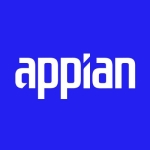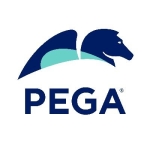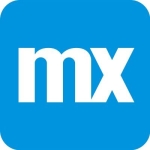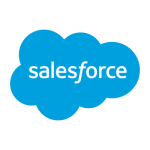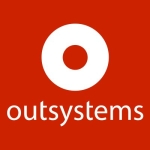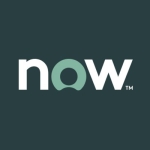
Lead Engineer at a tech services company with 10,001+ employees
Fast UI creation and responsive support improve project efficiency
Pros and Cons
- "The Unqork team is highly available and responsive."
- "There are few aspects that need improvement. I can't find any documentation or instructional videos on YouTube."
What is our primary use case?
I am using Unqork in the insurance and finance domain. I work in India, and most projects come from companies we term as 'onshore.' Currently, I am working with Transamerica, an insurance company, and previously, I worked for the Commonwealth Bank of Australia.
What is most valuable?
The major differences with Unqork compared to other platforms include its drag-and-drop functionality, which makes it a low-code, no-code platform. Despite being launched in 2017 and having limited external documentation, it provides an internal platform for help. Unqork has partnered with MongoDB for database support within applications. I can create a fully-fledged UI much faster compared to traditional coding. For example, what might take a day using conventional methods may only take an hour or two with Unqork.
What needs improvement?
There are few aspects that need improvement. I can't find any documentation or instructional videos on YouTube. Learning requires going through certifications that can take several months. There's also a community page, but it doesn't offer instant responses like AI-powered platforms. Another issue is with design compatibility; Unqork has its own styling which often conflicts with designs provided by clients, requiring custom CSS to adjust without disturbing the existing styles.
For how long have I used the solution?
I have been working with Unqork for three years.
Buyer's Guide
Unqork
October 2025
Learn what your peers think about Unqork. Get advice and tips from experienced pros sharing their opinions. Updated: October 2025.
872,837 professionals have used our research since 2012.
What was my experience with deployment of the solution?
There were challenges like integrating certificates for SSO and HTTP, but these were quickly resolved by the Unqork team, who are highly responsive through their Zendesk ticket system.
What do I think about the stability of the solution?
I have been using Unqork for three years and have not faced any kind of stability issues. The only limitation is the lack of external documentation.
What do I think about the scalability of the solution?
I haven't observed any scalability issues. Our projects contain multiple modules, and Unqork allows creating databases within its containers, offering great flexibility without any concerns.
How are customer service and support?
The Unqork team is highly available and responsive. They offer solutions quickly, and I rate their technical support as excellent.
How would you rate customer service and support?
Neutral
Which solution did I use previously and why did I switch?
Before working with Unqork, I have used low-code/no-code platforms like Bubble UI, Workato, and Boomi by Dell for previous projects.
How was the initial setup?
The initial setup was straightforward. For basic tasks, all it takes is dragging and dropping components, making it very easy to use. Certificate integration is simple, requiring string input to update.
Which other solutions did I evaluate?
I have worked with other low-code/no-code platforms like Bubble UI and Workato but not as direct alternatives to Unqork.
What other advice do I have?
I would rate Unqork around eight out of ten. It is a good platform, but the lack of external resources and documentation makes solving issues challenging. For API endpoints, Unqork requires manually checking modules, unlike the ease found in traditional coding. For these reasons, Unqork scores less in some areas despite its strengths in quick development and built-in resources.
Which deployment model are you using for this solution?
Public Cloud
If public cloud, private cloud, or hybrid cloud, which cloud provider do you use?
Other
Disclosure: My company does not have a business relationship with this vendor other than being a customer.
Last updated: May 7, 2025
Flag as inappropriateUser-friendly platform enables seamless navigation and efficient performance testing
Pros and Cons
- "Unqork is user-friendly and allows easy navigation for users without technical knowledge."
What is our primary use case?
I was a performance tester at Unqork for around one and a half years. I worked specifically with the Unqork dashboard application, thoroughly testing its performance and navigating different functionalities within the platform.
What is most valuable?
Unqork is user-friendly and allows easy navigation for users without technical knowledge. It provides the ability to renew policies after expiration without needing to recreate them. Once the application is fully developed, it becomes highly stable, allowing for effective performance testing. Its scalability is notable with low page load time, and it supports numerous functionalities easily.
What needs improvement?
I would like to see more detailed information on policies, as some are defined using technical language.
For how long have I used the solution?
I worked with Unqork for around one and a half years.
What was my experience with deployment of the solution?
During deployment, some code changes required me to rescript performance testing scripts, which is a standard practice whenever there is a change in code.
What do I think about the stability of the solution?
Unqork is stable once about 90% of the application is developed. Its stability improved significantly after the initial stages of development.
What do I think about the scalability of the solution?
Unqork's scalability is great. It loads pages quickly, even with numerous submission IDs and test data on the dashboard, which is advantageous.
How are customer service and support?
I reached out for Virtual Machines (VMs) needed for performance testing with 100 users. The interaction was helpful.
How would you rate customer service and support?
Neutral
How was the initial setup?
The initial setup involved working in a three-week sprint cycle with user stories. Deployment occurred every sprint, progressing from test to production stages.
What about the implementation team?
I was the only performance tester among six to seven developers, two leads, and two managers, along with three to four manual testers.
What was our ROI?
Unqork provided cost savings as I managed all performance testing tasks single-handedly.
What's my experience with pricing, setup cost, and licensing?
During rate and price calculations, when fields were entered and the calculate button clicked, the process initially took 18 seconds to load, but after resolving a bug, it took only 10 seconds.
Which other solutions did I evaluate?
I have not worked with any other no-code solutions apart from Unqork.
What other advice do I have?
I would recommend Unqork to others because it offers extensive functionalities and provides a good opportunity for learning. I rate Unqork nine out of ten overall.
Disclosure: My company does not have a business relationship with this vendor other than being a customer.
Last updated: Apr 22, 2025
Flag as inappropriateBuyer's Guide
Unqork
October 2025
Learn what your peers think about Unqork. Get advice and tips from experienced pros sharing their opinions. Updated: October 2025.
872,837 professionals have used our research since 2012.
Associate Software Engineer at a tech vendor with 10,001+ employees
No-code environment enables seamless application creation and modernizes systems
Pros and Cons
- "The platform is a no-code environment, making it easy to create applications by dragging and dropping components."
- "Unqork could benefit from allowing more flexibility in creating projects and extending them to other languages like JavaScript, Angular, or React."
What is our primary use case?
I worked for a client that was a bank, UBS. My responsibilities involved resolving application bugs, translating documents for Unqork, creating integrations, interfaces, workflows, and data flows.
What is most valuable?
The platform is a no-code environment, making it easy to create applications by dragging and dropping components. It allows easy workflow creation and integrates with external resources through API components, benefiting financial services and modernizing legacy systems.
What needs improvement?
Unqork could benefit from allowing more flexibility in creating projects and extending them to other languages like JavaScript, Angular, or React. While I understand the limitations of SaaS, such an option would be useful.
For how long have I used the solution?
I worked with Unqork for two years.
What was my experience with deployment of the solution?
Deploying new features and resolving bugs was straightforward. By accessing Unqork's administration part, I could transfer modules between development environments in about ten minutes.
What do I think about the stability of the solution?
The solution is stable. However, performance may suffer with complex projects, leading to delays. Although stable, these delays can affect user experience during transactions due to multiple API connections.
What do I think about the scalability of the solution?
Unqork is scalable, with an ease of connecting through APIs. However, ensuring scalability requires following specific steps, or it might be compromised.
How are customer service and support?
Although I didn't interact directly with customer support, I found their community and documentation very helpful, providing detailed guidance on various tasks.
How would you rate customer service and support?
Neutral
Which solution did I use previously and why did I switch?
Before Unqork, I worked with Siebel from Oracle, a CRM. Unqork is easier to work with due to its no-code platform.
How was the initial setup?
The initial setup of Unqork was straightforward, especially for creating user interfaces. It doesn't require configuring screen sizes, making it accessible on different devices easily.
What about the implementation team?
An additional team is not needed unless the project is large. In such cases, having developers and a cloud team focused on API development is beneficial.
What other advice do I have?
I would rate Unqork as an eight out of ten. I appreciate its low-code development features and ease of use, despite some performance issues and limited flexibility.
Which deployment model are you using for this solution?
Public Cloud
If public cloud, private cloud, or hybrid cloud, which cloud provider do you use?
Other
Disclosure: My company does not have a business relationship with this vendor other than being a customer.
Last updated: Apr 25, 2025
Flag as inappropriateAssociate Consultant at a financial services firm with 10,001+ employees
Roles and plugin features enable efficient data management and API interactions
Pros and Cons
- "Unqork is stable."
- "Unqork is pretty expensive compared to other tools like UiPath. The certification costs around $2000, which is ten times the price of UiPath."
What is our primary use case?
I have used Unqork for projects where I built multiple screens featuring both read-only and dynamic grids. I have also applied different roles to manage grid views for different personas. Additionally, I use Unqork for various purposes including creating web applications.
What is most valuable?
The plugin feature is the most valuable as it allows me to easily create APIs to interact with databases using plugins. The roles feature, specifically the rollback capability, is also valuable for controlling data visibility. Unqork's capabilities to easily send emails and create PDFs are additional features I appreciate.
What needs improvement?
The data workflow screen could be improved by increasing its size. Currently, the screen is small, making it difficult to work on larger data workflows since scrolling is required horizontally and vertically.
For how long have I used the solution?
I have been using Unqork for four years.
What was my experience with deployment of the solution?
Deployment is fairly good overall.
What do I think about the stability of the solution?
Unqork is stable. I have never found any issues with stability.
What do I think about the scalability of the solution?
I have never worked on a huge amount of data, so I can't specifically say about scalability. However, I have not encountered any scalability problems.
How are customer service and support?
I don't know about the support team because there is a community to resolve doubts. I never had to connect with the support team as the community was enough to clear my doubts.
How would you rate customer service and support?
Neutral
What's my experience with pricing, setup cost, and licensing?
Unqork is pretty expensive compared to other tools like UiPath. The certification costs around $2000, which is ten times the price of UiPath. This pricing can be a concern, especially for people in developing countries who may find it difficult to invest in certification without assurance of a job.
What other advice do I have?
If people are from IT, Unqork is easy to use with a bit of practice. However, non-IT people need more time to practice. I rate Unqork between eight to 8.5 out of ten for its stability.
If public cloud, private cloud, or hybrid cloud, which cloud provider do you use?
Other
Disclosure: My company has a business relationship with this vendor other than being a customer.
Last updated: Mar 7, 2025
Flag as inappropriateSoftware engineer 2 at Quantiphi
Offers robust security and efficient API handling
Pros and Cons
- "The features of Unqork that I find most valuable include its performance and security."
- "Unqork is a great choice over other BPMS tools like Pega."
- "The area that needs improvement in Unqork is its performance."
- "The area that needs improvement in Unqork is its performance."
What is our primary use case?
My primary use case for Unqork involves working on module-based applications. My current project deals with API performance, particularly focused on manipulating data. Previously, I worked on workflow-based applications.
What is most valuable?
The features of Unqork that I find most valuable include its performance and security. The platform excels in security by providing proper authentication and authorization to users. It allows handling of API endpoints effectively.
Performance-wise, Unqork facilitates connecting and configuring systems synchronously and efficiently. It is also capable of logging requests and responses, which is extremely beneficial.
What needs improvement?
The area that needs improvement in Unqork is its performance. Proper configuration and effective coding practices are needed to enhance performance.
Additionally, there are some limitations with the grid functionality, specifically the View grid and Dynamic grid. The View grid is efficient, whereas the Dynamic grid could be improved for better performance and functionality such as pagination.
For how long have I used the solution?
I have been working with Unqork for almost three years.
What do I think about the stability of the solution?
The stability of Unqork is relatively high, around eight out of ten.
However, UI styling limitations with certain components like the View grid and Dynamic grid affect its accessibility.
What do I think about the scalability of the solution?
I rate the scalability of Unqork as eight out of ten.
While I can get the necessary responses from technical support, they can take some time to resolve issues, mainly when dealing with Zendesk.
How are customer service and support?
Technical support from Zendesk is very reliable and effective. They are competent and provide timely resolutions to any issues faced.
How would you rate customer service and support?
Neutral
Which solution did I use previously and why did I switch?
Before using Unqork, I worked with JavaScript. No specific solution was used before Unqork.
How was the initial setup?
The initial setup of Unqork is relatively easy, I would rate it at eight out of ten.
Most challenges can be attributed to performance issues, which are manageable with regular updates and best practices.
What about the implementation team?
Deployment can be managed by one person, while ongoing maintenance needs a team of six to eight configurators along with a UI specialist.
What's my experience with pricing, setup cost, and licensing?
Unqork is very affordable, with a cost rating of three out of ten, making it a cost-effective and productive solution.
Which other solutions did I evaluate?
No other solutions were evaluated before choosing Unqork.
What other advice do I have?
Unqork is a great choice over other BPMS tools like Pega. It's an opportunity worth considering for those in the field.
I would rate the overall solution ten out of ten.
Which deployment model are you using for this solution?
On-premises
Disclosure: My company does not have a business relationship with this vendor other than being a customer.
Last updated: Feb 17, 2025
Flag as inappropriateTechnology Executive Driving Strategic InitiCross-Functional Leadership, and Global Digital at a consultancy with 10,001+ employees
Great UI and out-of-the-box integrations, but needs expanded cloud platform support
Pros and Cons
- "Unqork UI behaves consistently across devices and seamlessly adapts to various form factors."
- "The addition of Azure and Google Cloud alongside AWS would allow our deployment options to better align with enterprise strategic cloud choices outside just Amazon."
What is our primary use case?
Our primary use case for Unqork is to rapidly develop customer-facing web applications and portals to improve digital user experience and self-service capabilities. We operate in the insurance industry, which traditionally has lacked robust and convenient digital capabilities for customers and agents. With legacy software development approaches, it can take significant time and resources to design, code, test, and deploy new digital insurance applications and web portals.
Using Unqork's visual no-code platform, we can shorten these development cycles from months down to weeks. Our environment includes connecting with various legacy backends and core insurance systems running things like policy admin, claims, billing, etc. Integrating to these systems to build customer experiences on top has been challenging with traditional coding.
Unqork provides pre-built connectors to these systems that we can leverage right out of the box. For example, one of the first solutions we developed on Unqork was an agent portal that gives our insurance agents quick access to customer policies and claims status from any device. This also allows them to update records that sync back to the backend policy admin system. Building this with traditional coding would have taken over four months. With Unqork, we designed and tested the entire application in six weeks with an MVP. We are now able to use Unqork to rapidly design and iterate on new concepts for customers - like policy self-service portals, document upload flows, payment statuses, chatbots, and more.
Unqork's built-in AI capabilities also let us incorporate optical character recognition, chatbots, and other features faster than custom coding these. The flexibility of Unqork allows our business analysts and process designers to take concepts right from whiteboard to working software in days.
The reusable components and drag-drop interface accelerate what used to be months of requirements gathering and backend work before UI code could even start. By empowering more team members to own ideation and prototyping of solutions, Unqork unlocks our ability to translate digital ideas directly into customer-facing applications. We aim to improve NPS scores and retention rates and lower servicing costs through better self-service options.
Unqork is a strategic no-code solution enabling our ambitious digital experience roadmap.
How has it helped my organization?
Using Unqork's no-code platform has unlocked tremendous improvements across our organization - from product development velocity to breaking down silos between IT and business teams. Before Unqork, we struggled with slow release cycles for customer-facing solutions that met the pace of business demands. Our reliance on legacy coding and systems integrators created dependencies that caused bottlenecks. Requirement changes or enhancements would often add months to timelines, even for small features.
Unqork has transformed our ability to translate product ideas and business priorities into software at unprecedented speeds. What previously took four to six months of upfront planning, coding and testing now gets delivered in four to six weeks with Unqork's drag-and-drop development approach.
We are also seeing much higher adoption of completed solutions across business units because the no-code approach allows their direct participation in shaping requirements and designs. instead of just handing off specs to developers. Unqork's easy-to-understand visual models make it simple even for non-technical teams to provide input and make changes. Some key metrics reflecting Unqorks impact:
- Reduced time-to-market for new customer web portals by over 60%
- Lowered budgetary needs for simple web and mobile apps by over 40%
- Increased rate of requirements implementation from 53% to over 80%
- Increased business user participation in application builds from 17% to 89%
With faster and more aligned execution on digital solutions, our policy and claims processing volumes have seen 12% and 9% increases, respectively, from improved self-service options.
While adopting any new enterprise technology has challenges, we have not faced any major blockers from the Unqork platform itself. Their robust enterprise-grade architecture scales and secures our solutions without needing extensive backend coding. Instead of grappling with technical debt, we are now focused clearly on using Unqork to rapidly turn around innovative customer experiences.
Unqork delivers the speed, collaboration, and functionality we need as an agile insurance provider preparing for the next decade.
What is most valuable?
Of Unqork's wide range of no-code platform capabilities, the most valuable features for us have been its enterprise integrations, built-in AI engines, and advanced UI components.
The out-of-the-box enterprise integrations with systems like Salesforce, databases, ERP platforms etc. have been immense time-savers. Connecting Unqork frontends to core backend systems used to be a huge lift with traditional coding. Unqork removes this heavy lifting by providing pre-built connectors, APIs and data models for enterprise systems. For example, setting up a two-way sync between our claims management database and an Unqork portal took less than a day by simply pointing and clicking compared to weeks of effort previously.
The bi-directional capabilities ensure data updated in Unqork UIs can flow back to update source-of-truth systems. Unqork's integrated AI capabilities, like natural language processing, optical character recognition, and conversation bots, have also been game-changers.
We can incorporate document analysis and chatbots into portals without needing to code complex machine-learning pipelines and models. The no-code simplicity allows us to experiment with cutting-edge AI capabilities much faster. Advanced UI widgets like dynamic forms, Kanban boards, rich galleries, and even 3D model viewers have unlocked engaging self-service portal designs that previously required expensive custom development.
Unqork UI behaves consistently across devices and seamlessly adapts to various form factors. By leveraging out-of-the-box, AI, and UX features instead of reinventing the wheel, our teams can completely focus on business logic and process automation using Unqork. We estimate over 50% acceleration by relying on Unqork’s built-in capabilities versus traditional coding. The composability this provides is invaluable for interacting with legacy systems while delivering modern, competitive user experiences.
Unqork has been a force multiplier, making our technology team twice as productive while also bringing business teams directly into the creation process.
What needs improvement?
Given the rapid pace of innovation we’ve already seen from Unqork, there are a few major capability gaps we face currently. However, some areas of improvement and features we would benefit from in upcoming releases include:
1. Enhanced accessibility compliance - While meeting baseline standards, further WCAG conformance and widgets optimized for screen readers could expand access for disabled users of Unqork solutions. Added compliance certifications would also be welcomed.
2. Expanded cloud platform support - The addition of Azure and Google Cloud alongside AWS would allow our deployment options to better align with enterprise strategic cloud choices outside just Amazon.
3. More analytics and observability - Increased telemetry on app performance, component reuse rates, load testing etc. would help fine-tune Unqork solutions. More data and dashboard visibility into adoption would optimize our ROI.
4. Managing technical debt - As portfolios of Unqork apps grow over time, best practices and features to facilitate updating legacy components, refactoring old solutions, and preventing erosion will be helpful. Added controls to manage technical debt long-term.
5. Evolution of existing components - Existing rich widgets and connectors rounding out maturity with incremental capabilities would expand Unqork's versatility. Expanding the range of use cases served by current components.
6. Offline functionality - For mobile solutions, some limited persistent caching and offline usability during intermittent connectivity would better support field agents/inspectors. Tolerating offline states is key.
7. Design version control - Advancing visual version control capabilities for better design history, branching, merging, and reverting changes to Unqork sites would improve collaboration and prevent overwrite errors by nontechnical users.
For how long have I used the solution?
I've used the solution for one year.
Disclosure: My company does not have a business relationship with this vendor other than being a customer.
Buyer's Guide
Download our free Unqork Report and get advice and tips from experienced pros
sharing their opinions.
Updated: October 2025
Product Categories
Rapid Application Development SoftwarePopular Comparisons
Microsoft Power Apps
Appian
Pega Platform
Oracle Application Express (APEX)
Mendix
Salesforce Platform
OutSystems
GitHub CoPilot
ServiceNow Now Platform
KiSSFLOW
Buyer's Guide
Download our free Unqork Report and get advice and tips from experienced pros
sharing their opinions.
Quick Links
Learn More: Questions:
- Looking for recommendations for a no-code backend database for 500,000+ users - looking at CASPIO
- Help to migrate IBM Lotus Domino to another platform
- When should you use rapid application development and what are the most suitable projects for it?
- Who uses and benefits the most from rapid application development?
- Why is rapid application development important?
- When evaluating Rapid Application Development Software, what aspect do you think is the most important to look for?
- Why is Rapid Application Development Software important for companies?



